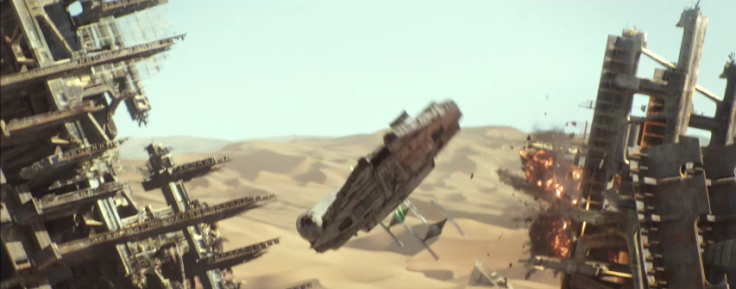What 'Star Wars' Technology Is Real? Droids, Holograms, Tatooine, But No Death Star Yet

In a space lab not too far, far from Earth, humans are using droids to develop autonomous maneuvering techniques that could shape the future of robotic spacecraft. We're not talking about a scene from "Star Wars" but a real investigation aboard the International Space Station that's been going on since 2006. Droids are not the only thing from "Star Wars" to become a reality since the first film in the mega-franchise was released, in 1977.
'Remote' Spherical Droids
NASA has been using Synchronized Position Hold, Engage, Reorient, Experimental Satellites (SPHERES) aboard the International Space Station since 2006 as a science investigation exploring the use of autonomous maneuvers. These robotic spheres can fly in formation and avoid objects in the confines of the space station.
Another experiment, the Department of Defense's SPHERES-Resonant Inductive Near-field Generation System (RINGS), was launched in 2013. SPHERES-RINGS tested wireless transfer of power and the use of electromagnetic fields to fly in formation. The SPHERES experiment received an upgrade in 2014 in the form of Google's Project Tango. The new SPHERES experiment uses a smartphone to visualize and map the space around the satellite.
"Smaller autonomous spacecraft could, with the right coordination and programming, perform tasks too complicated or too expensive for larger spacecraft to execute. Examples of these are satellite clusters, a collection of microsatellites that operate cooperatively to perform the function of a large single satellite," NASA stated of a possible technology developed from the SPHERES experiment.
Tatooine

Luke Skywalker's home planet of Tatooine is easily recognized by its two suns. The fictional desert planet orbits a binary star system, but Tatooine sort of exists 200 light-years from Earth. Meanwhile, the real planet Kepler-16b is a cold gas giant, roughly the size of Saturn. It lies outside of the habitable zone, but its discovery in 2011 means there could be a Tatooine-like planet out there that could support life.
"Given that most stars in our galaxy are part of a binary system, this means the opportunities for life are much broader than if planets form only around single stars," William Borucki, Kepler principal investigator, said in a statement.
Kepler-16b was discovered by NASA's Kepler mission. The planet orbits two stars that eclipse each other. When viewed from Earth, the smaller star creates a partial eclipse when it passes in front of the larger star. When the larger star passes in front of the smaller star, it creates a total eclipse. Scientists discovered Kepler-16b by observing dips in brightness caused by an object passing in front of the stars. The planet's existence was confirmed by measuring the gravitational tug on the two stars caused by Kepler-16b.
Holograms
Going beyond a not-really-holographic Tupac performance at Coachella 2012, interactive holograms are pretty close to reality. Microsoft HoloLens lets users interact virtually with their surroundings, but a headset is necessary for the experience. Luckily, Voxiebox is working on solving that problem. The company is creating 3D holograms without goggles or headsets. Voxiebox uses a special screen to project the images.
TIE Fighter Engines
Don't get too excited about having a TIE fighter in the near future, but NASA is already using the technology that powers these craft. As any "Star Wars" fan could tell you, TIE stands for Twin Ion Engine. NASA uses ion propulsion to power spacecraft into deep space. The Dawn spacecraft, which is currently orbiting the dwarf planet Ceres, uses such engines. The Deep Space 1 spacecraft used an ion thruster in 1998. Japan Aerospace and Exploration Agency used an ion thruster for its Hayabusa spacecraft that rendezvoused with an asteroid in 2005.
Laser Cannons
The U.S Navy may have gotten the idea for its laser cannon from "Star Wars." The Laser Weapons System doesn't quite have the same wow factor as its Hollywood counterpart, but it's pretty effective. The laser-cannon prototype was deployed on the USS Ponce in 2014. The weapons are incredibly cost effective, with laser-cannon shots costing around $1 each, Bloomberg reported.
© Copyright IBTimes 2024. All rights reserved.






















